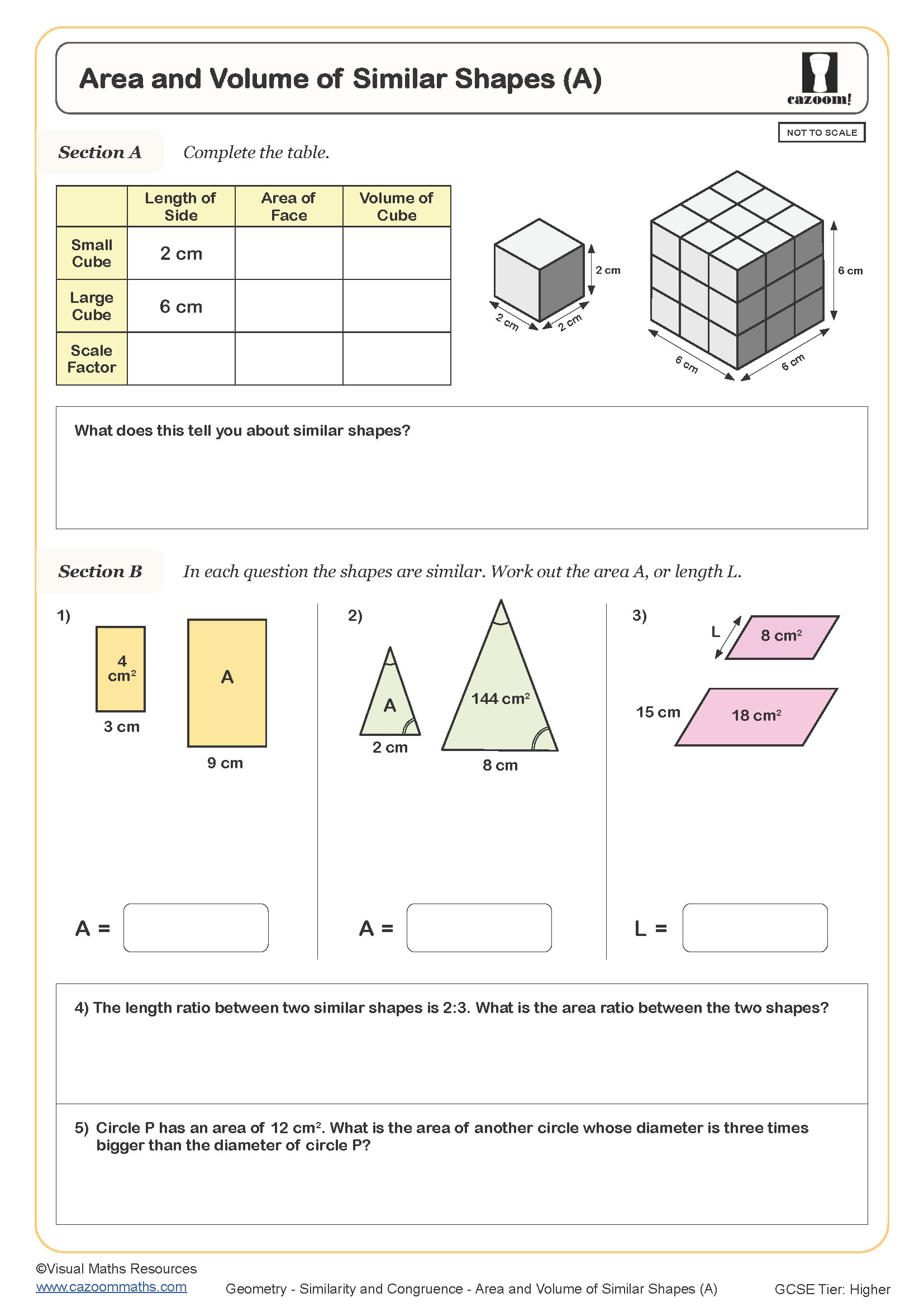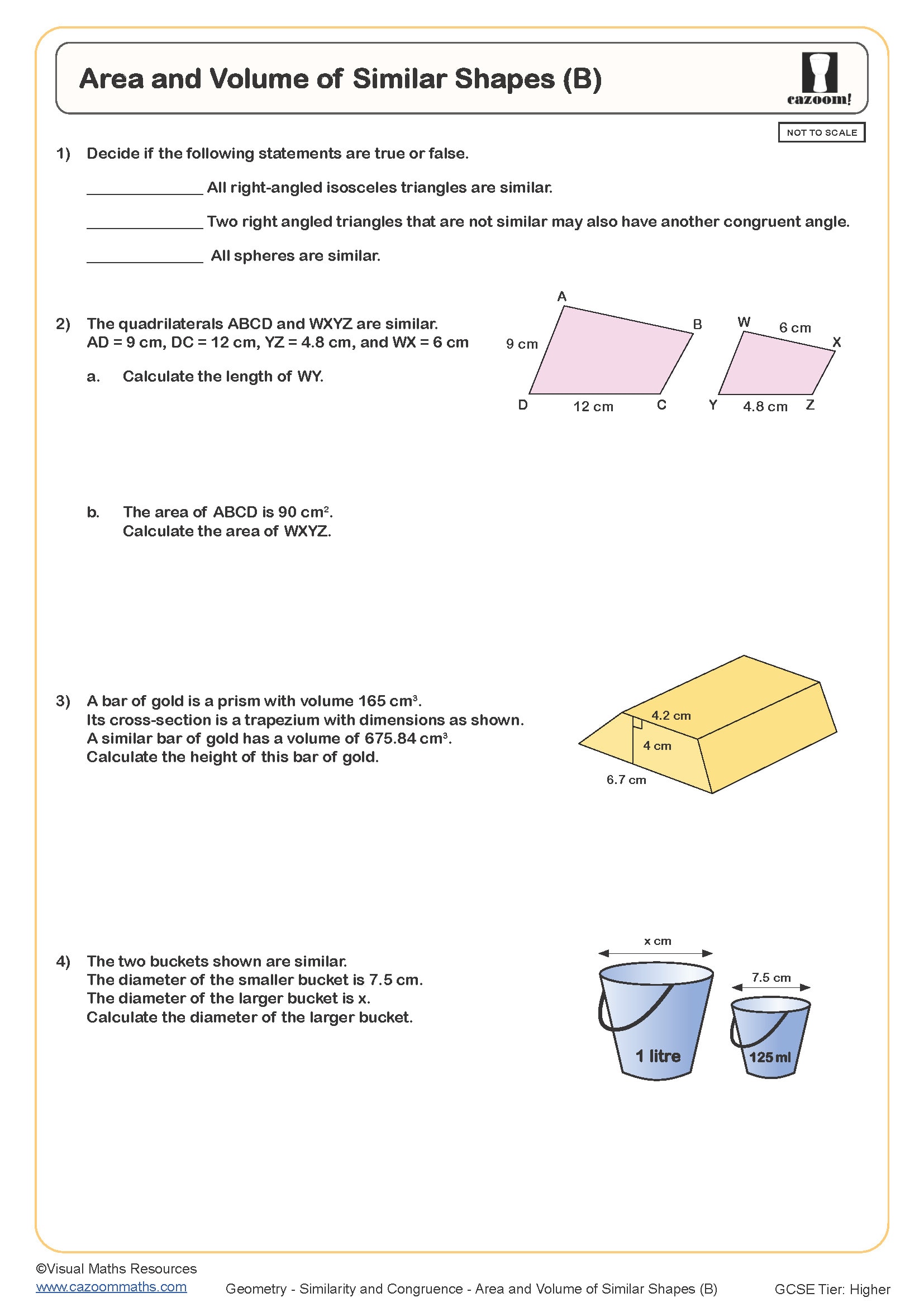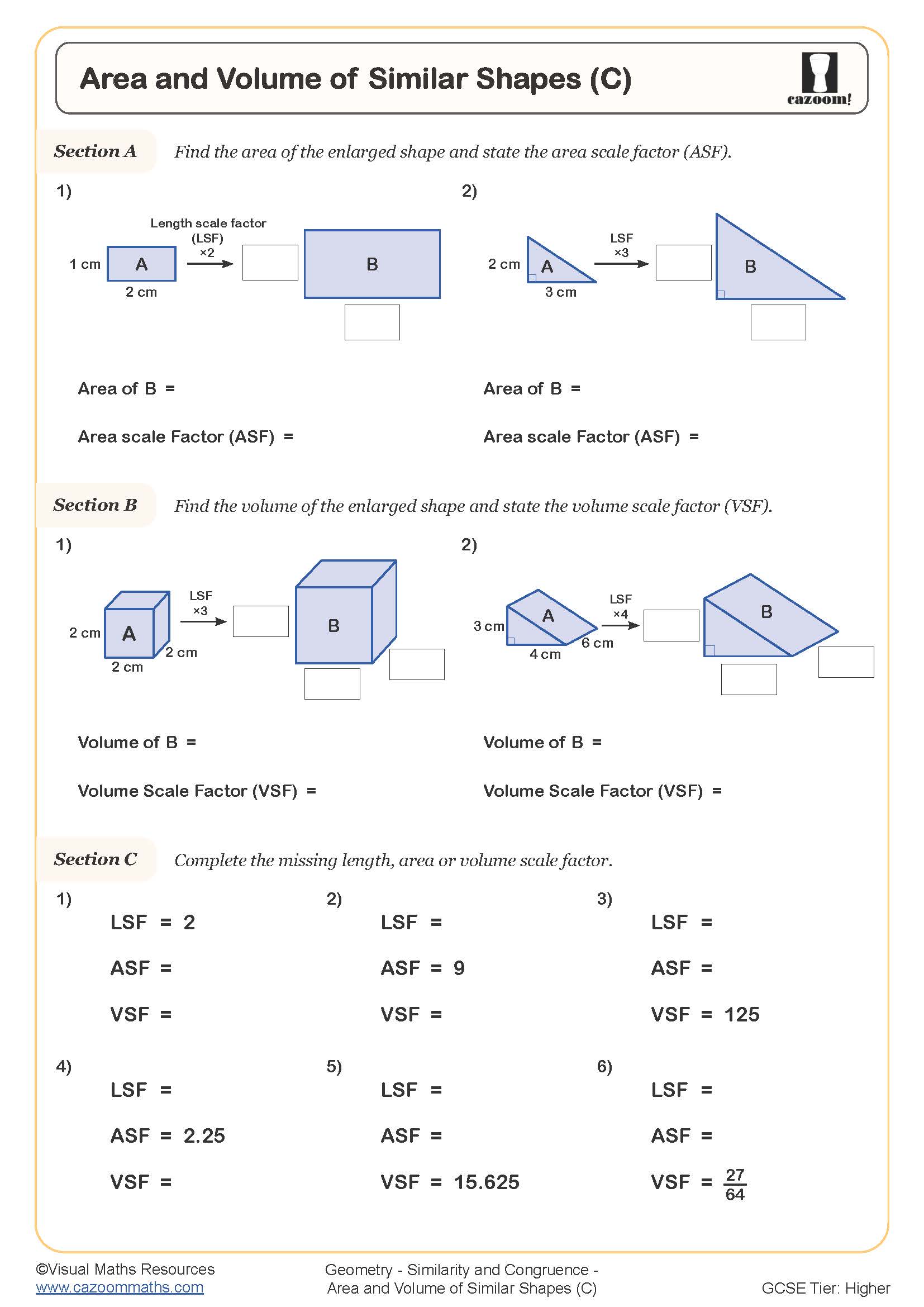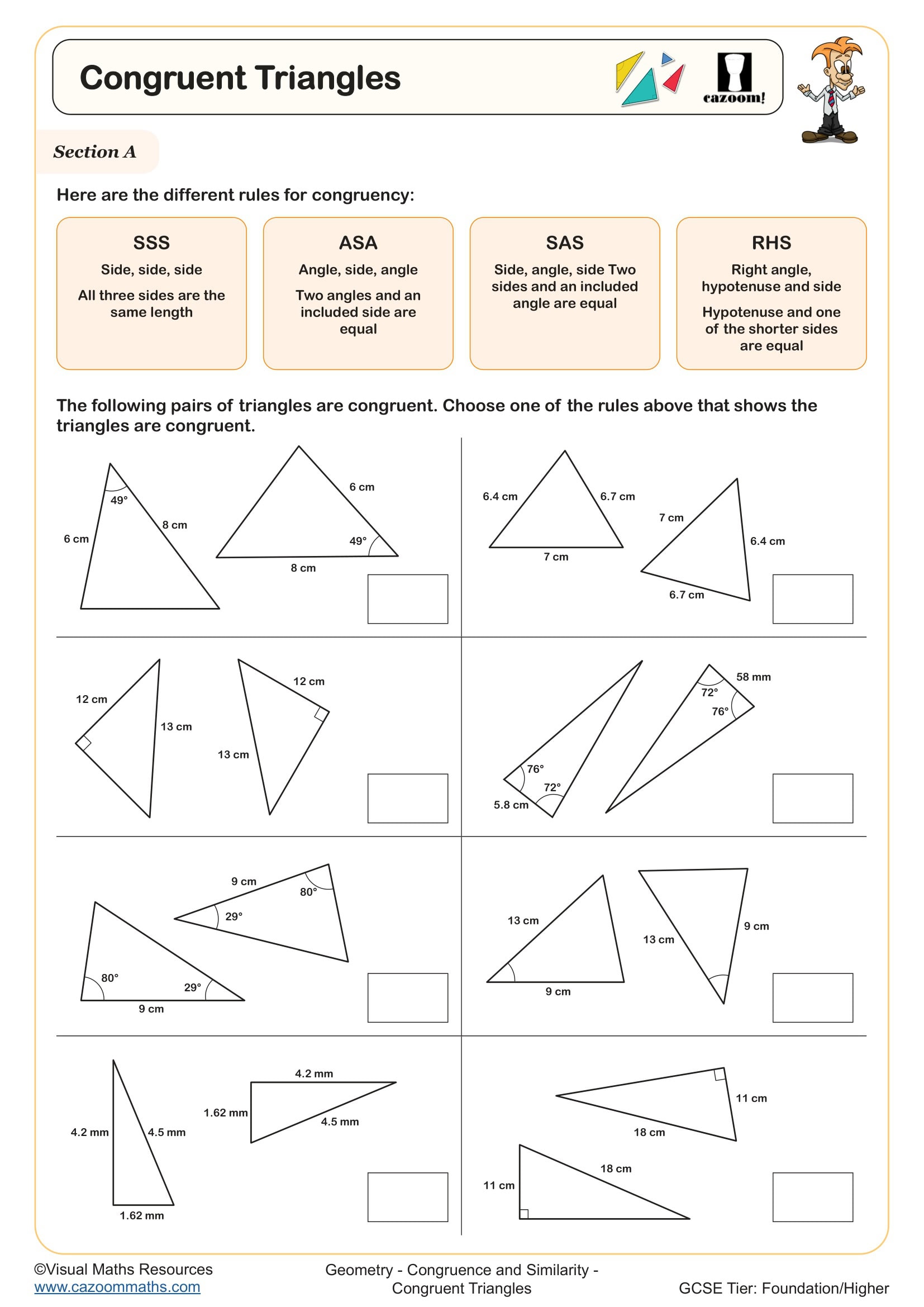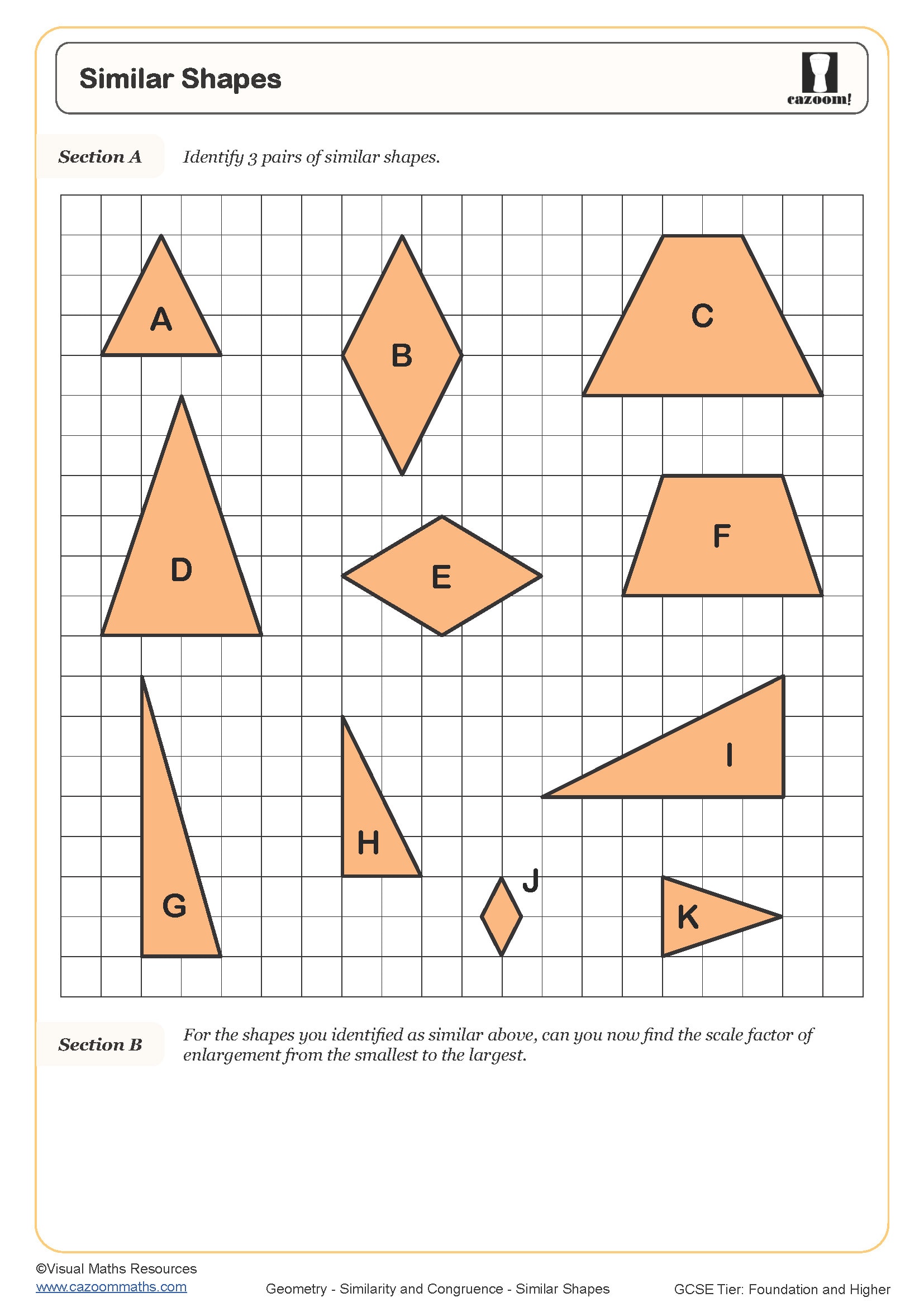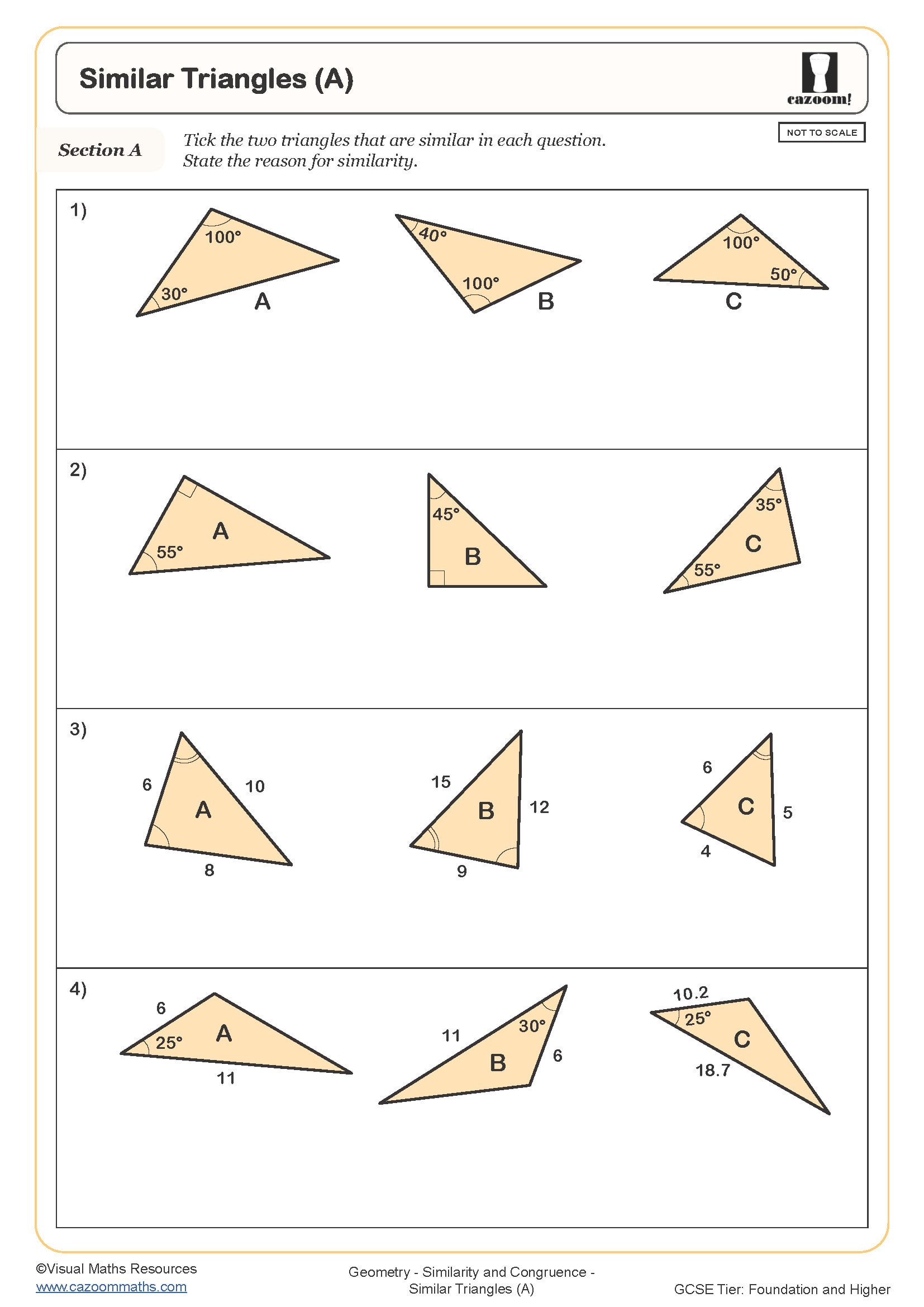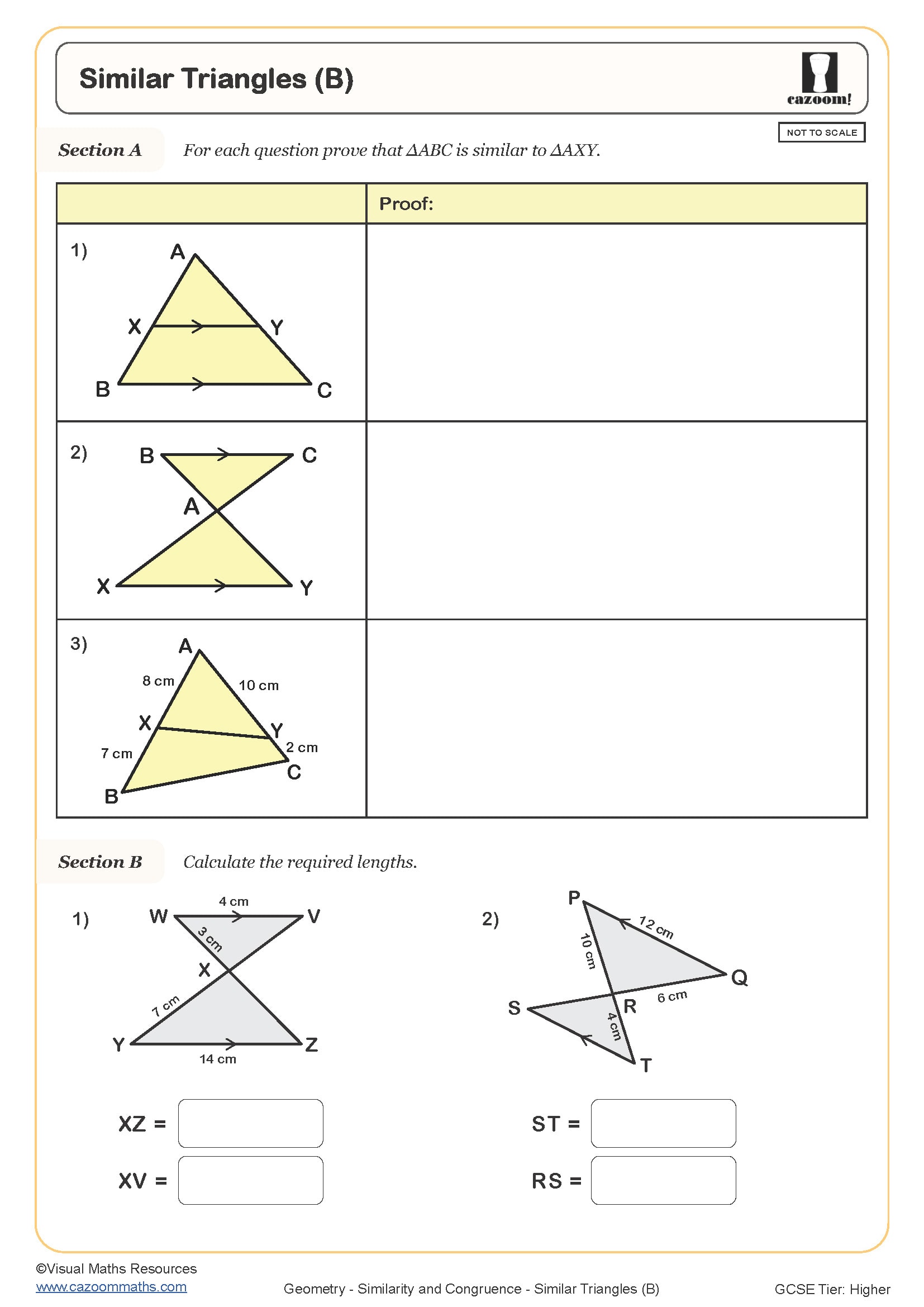Year 10 Similar Shapes Worksheets
Similar Shapes Worksheet PDF Downloads with Detailed Solutions
Finding quality similar shapes worksheets that actually help students understand the concepts (rather than just memorise procedures) isn't easy. These Year 10 worksheets focus on building genuine understanding through carefully structured questions. Students work through identifying similar shapes, calculating scale factors, and finding missing lengths. The detailed solutions show the complete thinking process, which we've found absolutely essential for student success.
What Skills Are Covered in These Similar Shapes Worksheets?
We've packed quite a lot into these worksheets! Students start with recognising similar shapes and understanding the relationship between corresponding sides and angles. They'll progress to calculating scale factors, finding missing lengths in similar triangles, and applying similarity to solve real problems. The area and volume scaling questions are particularly popular - students find it satisfying when those "aha moments" finally click into place.
Why Year 10 Students Need Similar Shapes Practice Worksheets
Here's what we've noticed: students who get plenty of practice with similar shapes questions perform significantly better in their GCSE exams. The connection between practice and performance is particularly strong with geometry topics. These worksheets give students the repetition they need to build fluency, plus the variety to develop a deeper understanding of when and how to apply similarity principles.
• Build confidence with scale factor calculations
• Improve problem-solving skills for GCSE questions
• Develop an understanding of ratio and proportion
• Master essential geometry concepts for higher-level maths
• Prepare thoroughly for exam-style similarity questions
Real-World Applications Where Students Use Similar Shapes Skills
Students always ask, "When will I ever use this?" with similar shapes, but the applications are everywhere once you start looking. Architecture and engineering rely heavily on scale drawings and similar triangles. Photography uses similar principles for perspective and composition. Even map reading involves understanding how scale affects measurements. It's actually quite satisfying when students realise they've been using similarity concepts without knowing it.
• Architecture and building design using scale drawings
• Engineering calculations for structural similarities
• Photography composition and perspective techniques
• Map reading and geographical scale conversions
• Art and design proportion principles
• Technology and screen resolution scaling
